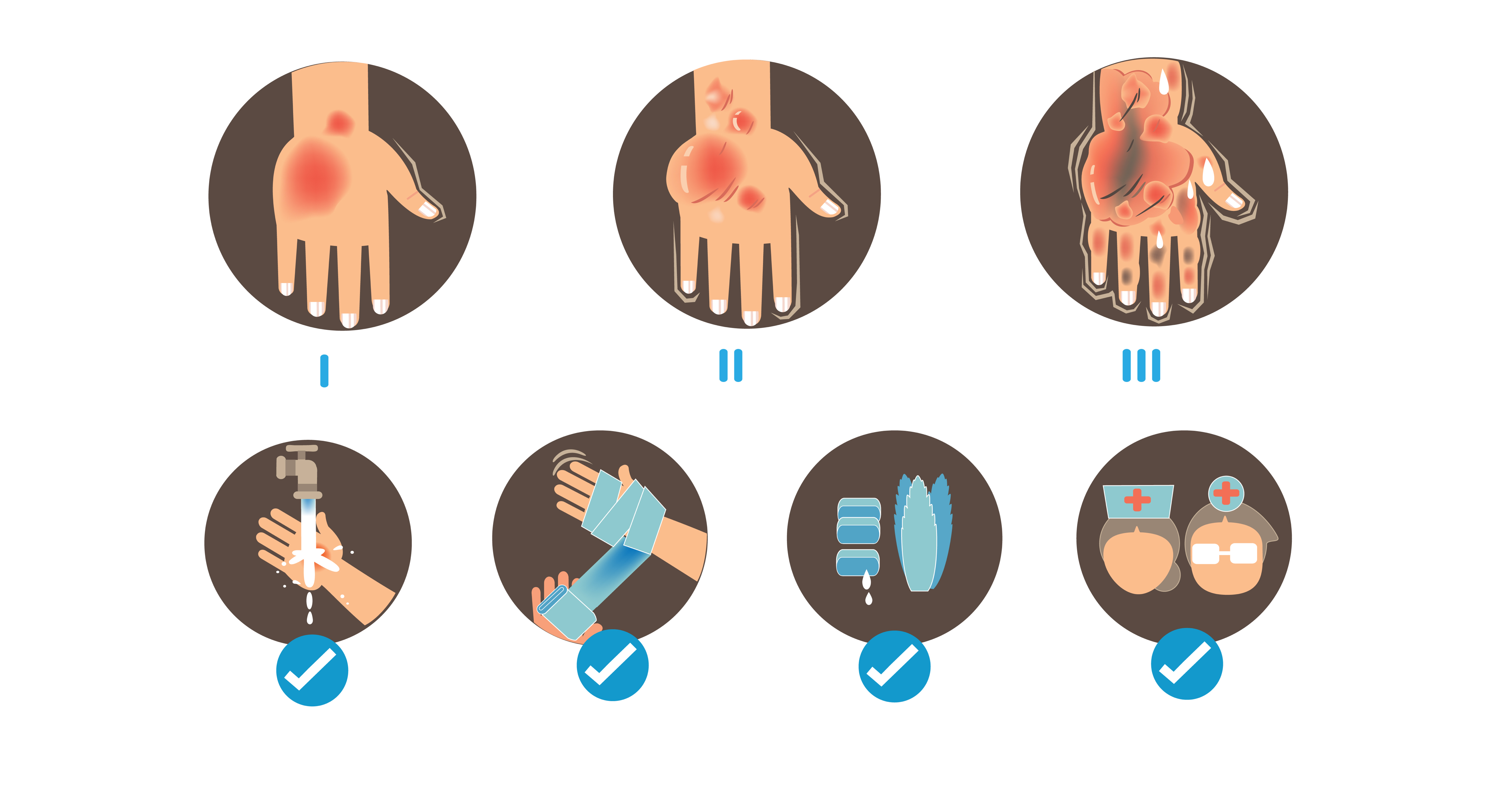You spilled hot oil all over your leg, or had a nasty run-in with a kettle of boiling water.
First, grade the burn:
- A first-degree burn is the mildest form, and the skin may appear red with slight swelling. It may look like a sunburn.
- Usually painful, a second-degree burn damages the top layer of the skin resulting in swelling and blisters.
- A third-degree burn is the most serious type. The skin is seriously injured, is white and clearly charred.
What not to do
- First, never rub butter on a burn! This is an old wives’ tale, something you may have even heard from your granny. Applying butter to a burn actually makes it hurt worse. Butter traps the heat inside the burn wound, prolonging the pain.
- Don’t use ice on a burn: it can cause frostbite.
- Never pop a blister. Burns often become blisters and it may be tempting to burst – don’t do it. This may cause an infection.
- If you expose your burn wound to the sun too soon, it can cause blistering. Some experts recommend shielding the burn from the sun for at least three years after the injury. If you have to go outdoors, cover up the burn.
- Don’t be a hero – get to the doctor if the burn is deep and painful. Waiting can make it worse.
What you can do
Only first-degree burns should be treated at home. Run cool (NOT COLD) water over the area for a few minutes to help lower the temperature. Submerge the burnt area in cool running water for at least 10-30 minutes, until the pain subsides. Cool, or even very lukewarm water reduces the heat and prevents further tissue damage. Don’t use cold water: it may feel better, but it will prevent blood-flow to the burn, and can make the damage worse.
When the pain subsides a bit, apply an aloe vera gel or antibiotic ointment over the area and cover with a damp gauze or clean cloth. Try to change this dressing twice a day.
Make sure to remove clothing and jewellery from the burnt area as swelling could make it difficult to remove later. Don’t try to remove clothing that sticks to the skin.
If a secondary burn is on an arm or leg, keep the limb elevated above the heart.
Take paracetamol for pain.
See a doctor immediately if:
- Your burn is on the face, genitals, joints, hands or if it’s an electrical burn.
- If it looks severe and larger and covers a proportion of the body.
- The burn is oozing, tender and swollen.
- You or the person who’s been burned stops breathing, or finds it difficult to breathe.

